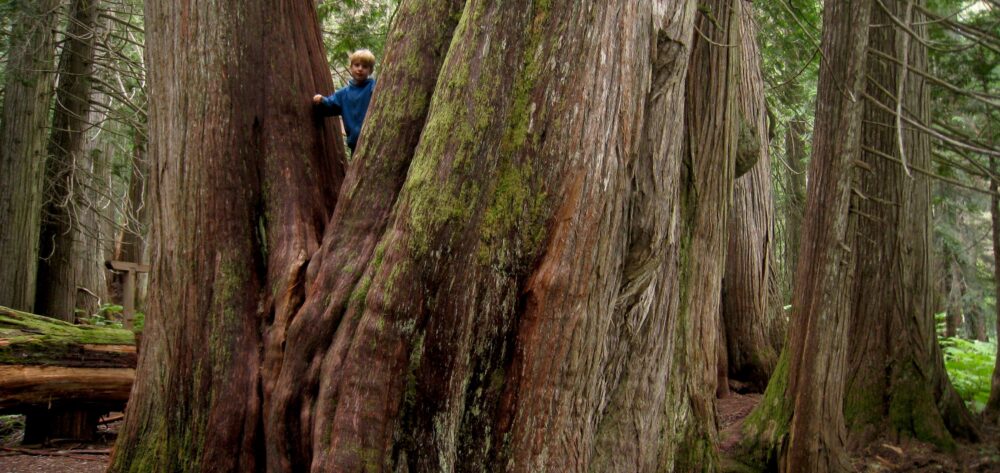June, 2019 saw the release of the long-anticipated Old and Ancient Tree Map of Whistler. In this map, explorers (locals and visitors alike) can follow pre-planned paths or choose their own route to see a selection of the ancient (uncut) trees around the Whistler valley. From the oldest tree (at over 1200 years old!) to groves of Douglas First or Cedars, map users can learn about when each site’s trees started growing, what their history was like (have they ever been in a forest fire?), and much more.
Get your map today at Armchair Books in Whistler Village

Step Back Into Ancient Whistler
Whistler is on the eastern edge of the Pacific Northwest’s magnificent temperate rain forest, an ecosystem that is globally significant for the antiquity of its forests, for its unique species, and as a carbon sink that helps slow climate change.
Logging and urban development have removed vast areas of forest at lower elevations. Pockets of spectacular old and ancient trees nonetheless remain throughout the Whistler area. Whether you are travelling by foot, bike or vehicle, you can use this map to explore the oldest, most charismatic, and most accessible ancient trees in Whistler.
Tree Coring
Coring trees around Whistler has shown that our surrounding forests are home to trees that are 600, 800 and in some areas over 1000 years old. Whistler’s oldest documented living tree was found as part of the 2014 phase of tree coring projects, a 1200+ year old yellow cedar found in the Callaghan Valley.
About This Project
The information on the map comes from over a decade of tree coring by Snowline Ecological Research and AWARE. Almost 1,000 trees from the Whistler area were cored and this map is the first complete compilation of that data.
This map project is to highlight original (uncut) old forests in a time when they have become increasingly rare. Logging and development have reduced low-elevation forests to a small fraction of their original extent, and these human pressures continue to threaten our remaining old forest.
Tree coring, analysis, photos and content: Bob Brett
Project management and editing: Claire Ruddy
Project Assistants: Adrien Baudouin, Don Brett, Kristina Swerhun, Lori Daniels & UBC team, Meesh Berthoud, Stephanie Redmond, Max Tougas, Melanie Tardif, Murray Dee, and Rob Leblanc

Thank you to our sponsors!




